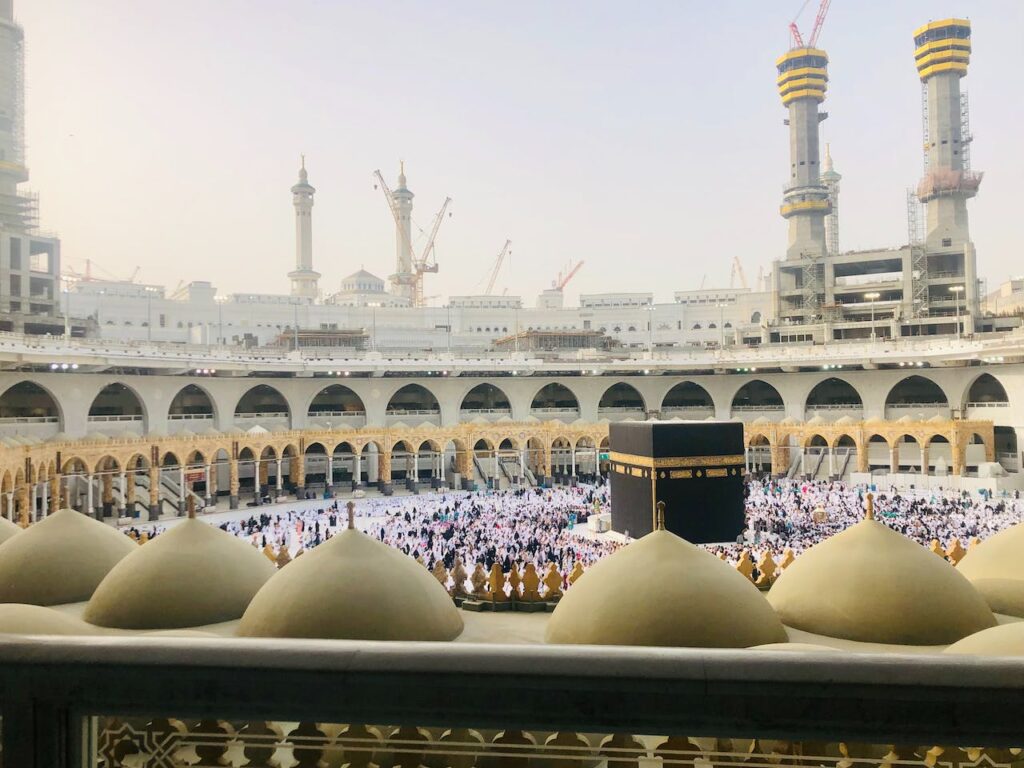Every year, millions of pilgrims travel to Mecca; To perform Umrah, asking for blessings and forgiveness for their sins from Allah, so we will talk about the History of Umrah, and when it was first imposed on Muslims.
History of Umrah
The Umrah was imposed in 9 AH, and since then Muslims can perform the Umrah at any time they wish, but it is not preferable to perform the Umrah during the days of Hajj.
History of Umrah | Hudaybiyyah Treaty
The story of the Hudaybiyah Treaty begins in the year 622 AH, Which is when the Prophet Muhammad (pbuh) asked the Muslims of Mecca to migrate to Medinah to get away from the harm of the Quraysh.
Despite the comfort and peace that the Muslims felt in Medinah,
they wanted very much to return to Mecca and perform the Umrah.
In the year 6 A.H. (628 A.D.) the Prophet (pbuh), had a dream that he had gone to perform Umrah, and when he told the dream to his companions,
they took it as a sign from Allah that they had to go to Mecca and perform Umrah.
So the Prophet (pbuh) went out to perform Umrah in the month of Dhu’l-Qa’dah with his wife, Umm Salamah, in addition to one thousand and four hundred Muslims.
When they arrived at Mecca, Quraysh refused to let him and those with him among the Muslims enter it, so the Prophet (pbuh)sent Uthman to tell them that they had not come to fight, but to perform the rituals of Umrah, and the Quraysh detained Uthman bin Affan with them.
Until the Prophet (pbuh) was able to conclude a deal with Quraysh to allow them to enter to perform Umrah, and that no war would break out between them for 10 years.
How Many Times Did the Prophet (pbuh) Perform Umrah?
The Prophet, (pbuh), performed Umrah four times:
- Umrah Al-Hudaybiyyah in year 6 AH.
- Umrah Al-Qadha in year 7 AH.
- Umrah Al-Ja’ranah in year 8 AH.
- Umrah with the Farewell Pilgrimage.
On the authority of Anas, the Prophet (pbuh)
performed Umrah four times in Dhu’l-Qa’dah, except for the one that he performed with his Hajj,
His Umrah is from Al-Hudaybiyah, and from the next year, and from Al-Ja’rana, where he divided the spoils of Hunayn and his Umrah with his Hajj”
[ Narrated by Bukhari and Muslim]
عن أنس رضي الله عنه أن النبي صلى الله عليه وسلم:
اعتمر أربع عمر في ذي القعدة، إلا التي اعتمر مع حجته، عمرته من الحديبية، ومن العام المقبل، ومن الجعرانة، حيث قسم غنائم حنين، وعمرة مع حجته.
[رواه البخاري ومسلم]
Expansion of Haram
Part of the history of Umrah is the expansion of the Haram, for example:
1- In the Era of the Caliphs
Firstly,
The first expansion of Haram was during the reign of the second caliph, Umar ibn al-Khattab when he returned Ibrahim’s shrine to its place and surrounded the Haram with a wall.
Secondly,
Othman bin Affan increased the Haram area, and he was the first to enter the corridors and marble columns for it.
2- Umayyad State
The expansion of the Haram during the Umayyad era included all of the following:
- During the reign of Abdullah bin Al-Zubayr, the Kaaba was rebuilt.
- During the reign of Al-Walid Abd al-Malik, the Haram expanded for the fourth time in the history of Muslims.
- Where the area was increased, the Syrian and Egyptian columns were introduced to it,
- Moreover, the balconies were built to protect the worshipers from the heat and flames of the sun.
3- During the Abbasid State
Many expansions and additions took place during the Abbasid era, for example:
- Expanding the Shami corner and increasing the area of the Haram.
- Building a minaret in both the western and northern corners of the Haram.
- Cover the Zamzam well as appropriate.
- Dar Al-Nadwa was demolished and converted into a portico in the mosque.
- The construction of internal and external doors.
4- During the Era of the Ottoman Empire
Under the reign of the Ottoman Sultan Selim II and Sultan Murad IV, repairs were carried out in the Haram,
Moreover, during the reign of Sultan Abdul Majeed, the reconstruction and expansion of the Prophet’s Mosque took place, and work took 13 years.
5- In the Saudi Era
In the Saudi era, many reforms and expansions were carried out, for example:
- Paving the distance between Safa and Marwa.
- Installing umbrellas that protect pilgrims, renewing lamps, and cooling Haram with fans.
- Building a private building in the Zamzam well.
- Increasing the area of the Haram more than once to accommodate approximately 2 million pilgrims.
In conclusion,
Umrah is one of the acts of worship that has a great reward with Allah, so be sure to perform the Umrah as soon as you can.





